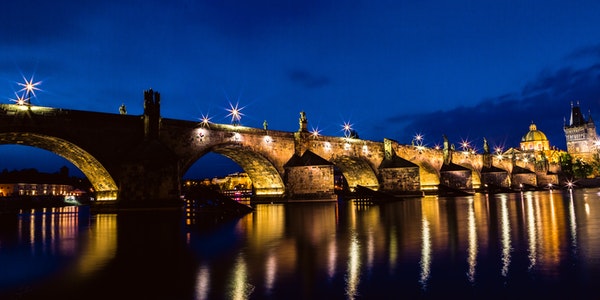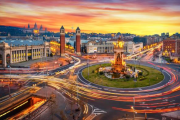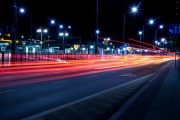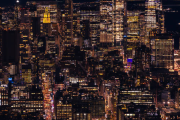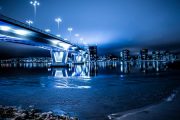Brief Introduction
As the main cultural carrier and image project of the city, buildings have gradually developed their landscape value and commercial value at night. Urban light pollution will then quietly rise. This new type of pollution problem mainly comes from urban vehicle lighting and building night scene lighting. At present, we have started research dedicated to solving this kind of pollution problem. We can reduce the harm caused by this pollution to a certain extent by adopting an environmentally friendly and energy-saving LED lighting control system in the building night scene lighting. This article will discuss the application of LED lighting control system in building night scene lighting.
The Development Status of LED Lighting
Under the current situation, due to the decline in the price of upstream chips and the improvement of the luminous efficiency of LED lighting fixtures, people are paying more and more attention to the development of LEDs in the lighting field, and the LED industry itself has shown a very good development trend.
Although the market share of LED in the lighting market in 2010 was less than 5%, in 2021, the market share of LED lighting has reached more than 60%. And within two years, with the development and innovation of science and technology, LED technology will become more mature, and its market share will reach at least 80%.
In the development process of LED lighting, architectural night lighting is undoubtedly one of the main development directions. On the whole, the prices of LED lighting products show a downward trend in the short term.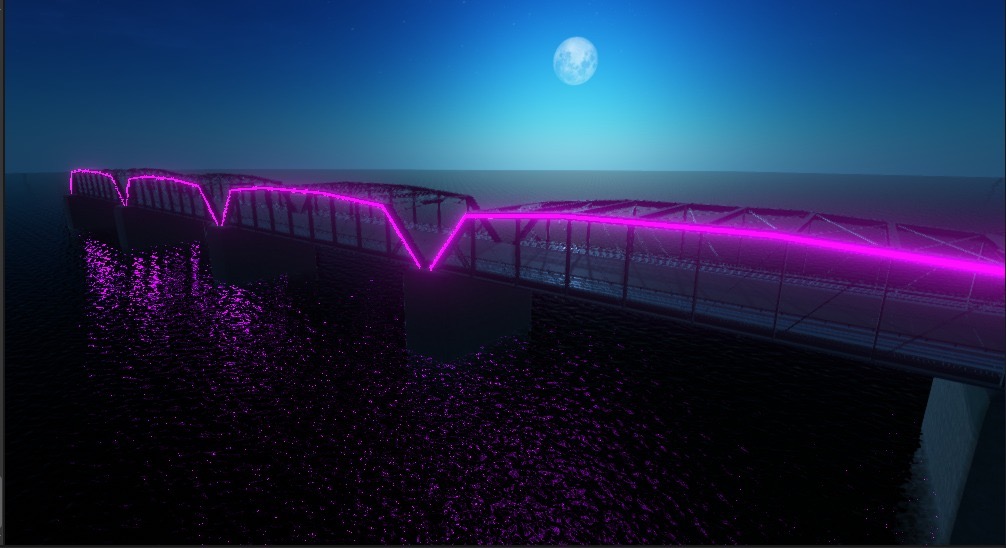
The government and enterprises in various provinces and cities attach great importance to the development of LED lighting. In 2010, most domestic enterprises invested heavily in the field of LED chip production. LED chips are no longer expensive, but gradually reduce the price. In particular, the price of high power LEDs for lighting applications has fallen by about 15% to 20%. It is worth mentioning that in the next few years, my country plans to increase more than 1,200 LED equipment MOCVD. The capital investment of enterprises and the strong support of the state have increased the production capacity of chips, and at the same time greatly promoted the decline of the cost and price of LED lighting products.
In addition, technological progress is also one of the reasons for the decline in the price of LED chips. According to reports, according to the LED target set by the Ministry of Energy, the target in 2010 is 140lm/W, and the luminous efficiency of LED in 2020 has reached 243lm/W.
LED intelligent lighting and constant current drive control system.
Firstly, the system hardware design is introduced. The intelligent lighting control system is designed based on μPD78F0034 as the main control device, which is mainly composed of sensor unit, controller unit, LED drive circuit and lighting system. The main function of the μPD78F0034 chip is to calculate and process the signal data received by thermal infrared sensors, strong light sensors, and voice-activated sensors and preliminarily processed by A/D conversion. Display the circuit to help the system work properly.
Second, the system software design. In order to achieve the purpose of simplifying the design structure, the modular design idea is used as the leading factor, and the function module subroutines are set up with the main program as the core. When the system is working, the main program calls each function module subroutine. Each functional sub-module performs its own duties, and the signal input module is responsible for the input of three types of sensor signals into the single-chip data channel.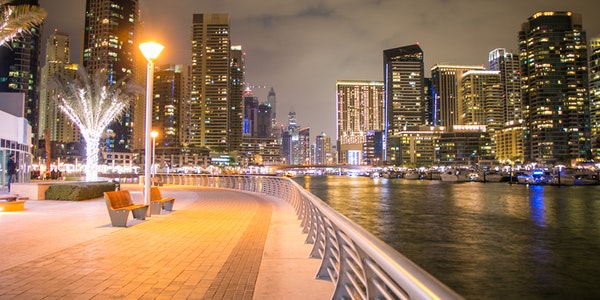
In the control system software, the signal of the sound sensor and the signal of the infrared detector are processed as the Boolean data of the switch after rectification, amplification and digitization. After rectifying and amplifying the ambient supplementary light, the signal generated by the light intensity detection system is divided into two channels, one of which is a Boolean value, and is calculated with the output generated by the first two channels of signal processing, as the basis for generating the switch signal of the light switch. The other way is to convert the environmental data to A/D, and output the code to the output module of the system. The system controls and adjusts the brightness of the lights, and appropriately changes the LED brightness according to the surrounding environment, and finally realizes the purpose of LED intelligent lighting.
After the system is set up, it can automatically control the switch and brightness of LED lighting fixtures according to the requirements of different working environments and the alternation of day and night environments without manual supervision. Especially for the high-power LED lighting fixtures in the night scene lighting of urban buildings, we use the constant current source driving method, which can not only improve the electricity efficiency and save electricity, but also effectively prolong the service life of the LED lighting fixtures.
Design Requirements for LED Lighting Control System for Architectural Night scene Lighting Applications
With the rapid development of modern technology, urban architectural lighting technology has been steadily improved, LED lighting fixtures will gradually gain a higher market share in the global market, and its development potential is beyond doubt. However, how to go further on this basis and better achieve low carbon, energy saving and environmental protection is the primary problem we face in the design of LED lighting control system in our research on building night scene lighting.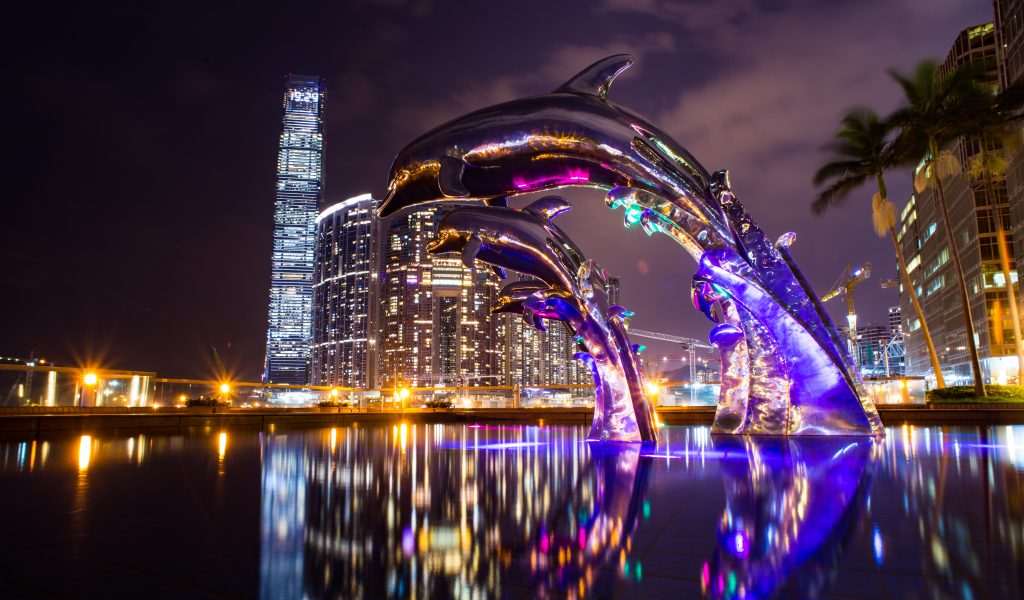
Urban building night scene lighting must not only ensure the creation of a good light environment, be scientific, practical and forward-looking, but also achieve convenient maintenance, safe use, energy saving, environmental protection, health protection and green lighting.
In the energy-saving evaluation of architectural lighting, we generally use the level of LPD value as the main evaluation index. LPD, that is, lighting power density, is the main indicator for evaluating building energy efficiency, mainly referring to the lighting installation power (including light source, ballast or transformer) per unit area of a building room or place, and the unit is watts/square meter.
The LPD value is related to energy saving in the lighting field, which will prompt the lighting design to comprehensively consider and take into account the illuminance level, lighting quality and lighting energy efficiency, and promote the promotion and application of more efficient light sources, ballasts, lights and other products in the design.
In addition, realizing green environmental protection, energy saving and emission reduction is one of the design requirements of LED lighting control system. Prescribing LPD limits will help to achieve energy-saving lighting. We also need to try our best to save energy in the control system, that is, energy saving and environmental protection of the sensor control circuit. Because of the energy consumption of lighting, not only the light source emits light and heat, but the entire lighting control system also relies on electrical energy to run and consume energy. Therefore, the control system energy saving is very important. The design of the LED lighting control system we designed and implemented should be an intelligent control system that can achieve secondary energy saving or multiple energy saving.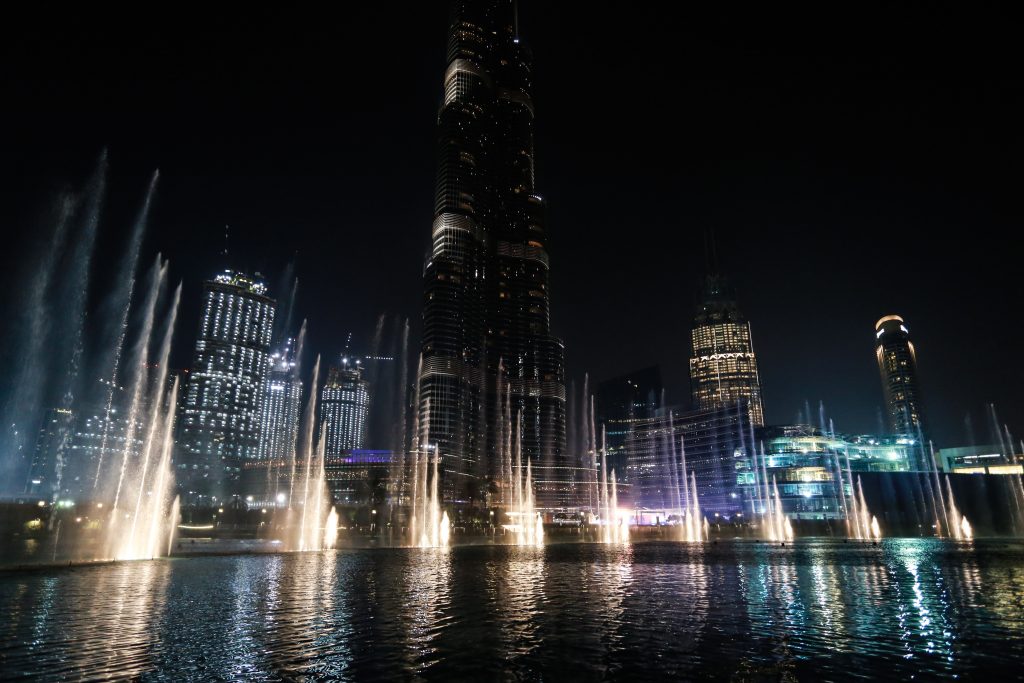
Design of LED Lighting Control System for Architectural Night Scene Lighting Applications
In urban construction and planning, the design of lighting is becoming more and more important. Even in many countries and regions, the beautiful city night lights have won the reputation of “new scale at night” and have become a new measure of urban civilization.
When we design the LED lighting control system, only by adhering to the “people-oriented” design concept and meeting people’s needs can we maximize the integration of lighting effects and the surrounding environment. The pursuit of urban building night scene lighting is an innovative design and enjoyment of art. Using some low-power LED products with a small light-emitting angle, focusing on local lighting, there is a large enough space for design choices in appearance, leading the fashion and trend of architectural lighting.
At the same time, the LED point light source can make the spatial layering of the architectural night scene lighting picture stronger and richer. The traditional culture with regional characteristics is integrated into the lighting design, so that the lighting not only meets the basic functional requirements, but also can show the urban style and regional cultural characteristics, so as to form the unique light culture of the city and create a unique urban night scene.
The application of LED architectural lighting control system in architectural night scene lighting should also pay attention to the overall effect and details of the building. For general buildings, the hidden framed glass curtain wall lighting system, the framed glass curtain wall lighting of the building body, the lighting of the top glass dome, the lighting of the ground floor of the building, the lighting of the building body and the top signs are all links that cannot be ignored. .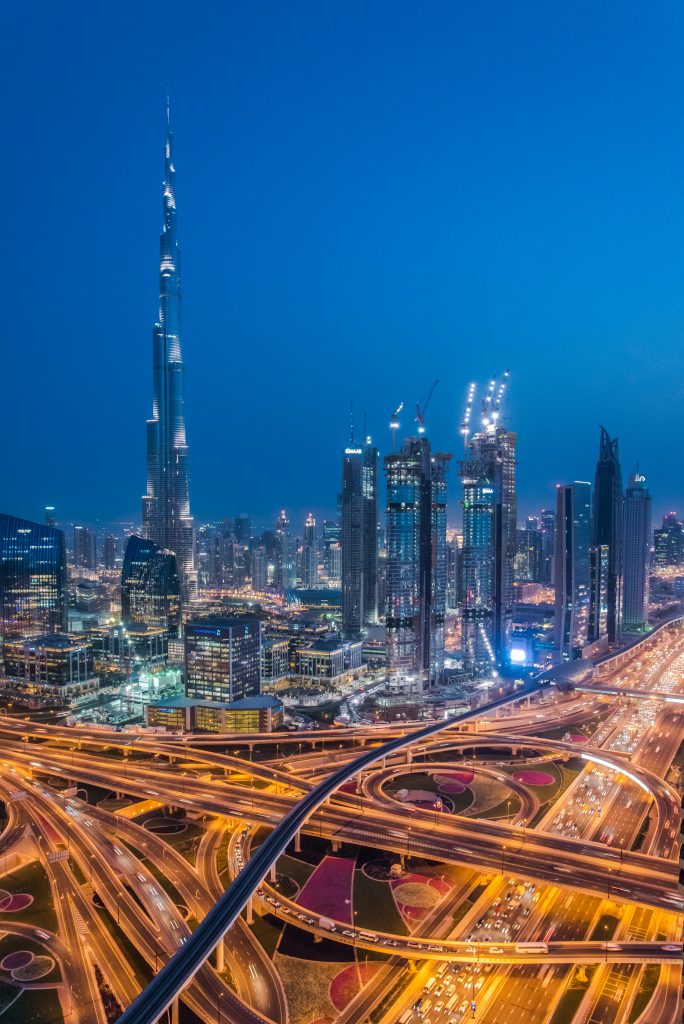
The color of the LED is good, and the power consumption is relatively small for traditional lighting tools. The durable life is also relatively long, and the voltage is also low. There is no safety hazard and no pollution. The small size is convenient for concealment, and it is suitable for the urban lighting principle of seeing the light but not the light, and so on. These provide optionality for urban lighting use. Urban lighting actually requires creativity and art to a greater extent than brightness.
1. Decorative lawn lights, landscape lights, bulbs, etc.
In the urban lawn and green space, the LED light-emitting parts are designed into various structural forms such as rings and graphic shapes to partially illuminate the lawn, showing a more humanized lighting. At the same time, during the day, it also becomes an element of decoration, which is very special.
The rated working voltage of commonly used products is AC110~220V, and the control method is mostly internal control (in places that need to be synchronized, the synchronization line can be used to achieve forced synchronization). In practical projects, it is often used in conjunction with gas discharge light sources as decorative lighting. Using LED light sources of different shapes and functions, such as lawn lights, landscape lights, and bulbs, can be combined into colorful light phantoms. This “multi-color, multi-bright spot, multi-pattern” change reflects the characteristics of LED light sources. The landscape lighting market is mainly based on decorative lighting in public places such as streets and squares, and the driving force mainly comes from the government.
2. Underwater lights
LED underwater lights are placed underwater for lighting of water bodies, and the protection level should reach IP68. Rated working voltage DC12V. The low-voltage operating characteristics of LEDs make them safer than any light fixture ever built. The advantage of long life also makes maintenance more convenient. The lighting effect produced is also richer than the commonly used PAR lights and gas discharge lights.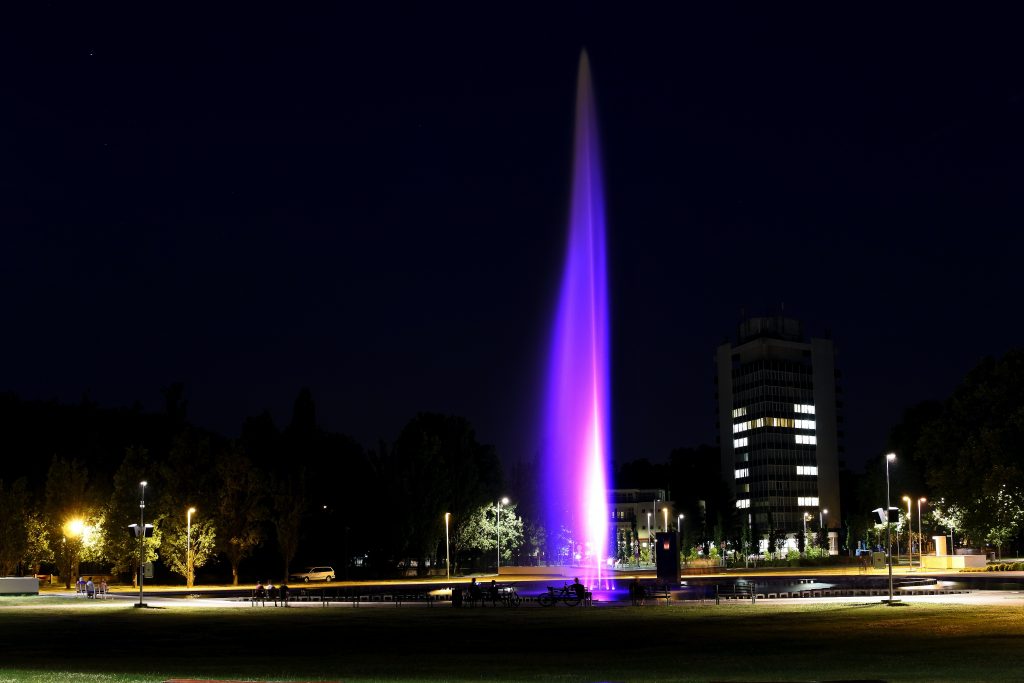
3. Floor lights
In urban lighting, using LED lights as ground lights has many advantages.
We can miniaturize the LED light source.
There are two main types of the most common forms used. One is to use the traditional road lighting fixture shell, but in the fixture, a matrix LED is installed on an almost flat mounting surface (also a reflective surface). This design method is impossible to obtain a good light distribution of lights. The other is to integrate multiple LEDs in a circular area (the diameter of the area is about 30mm to 40mm), so that the light output density of this small area is close to that of high-intensity gas discharge lights, and then the lights are used to reflect them for light distribution. . However, the luminosity of the lights with this design method will not be better than that of traditional road lighting lights. And because the high-density LEDs are integrated in a small area, the service life of the LEDs is often affected.
Therefore, the LED light-emitting area can be designed according to the size and structure of the specific ground of the city. The embedded stone light and floor tile light are processed in the same way as the paved stone, so as to achieve the effect of harmony and unity between the environment and the light source. At present, some products have realized the modular design, such as the luminous floor tiles used as the lighting of the ground pavement. Modulus specifications vary, depending on the specific situation.

